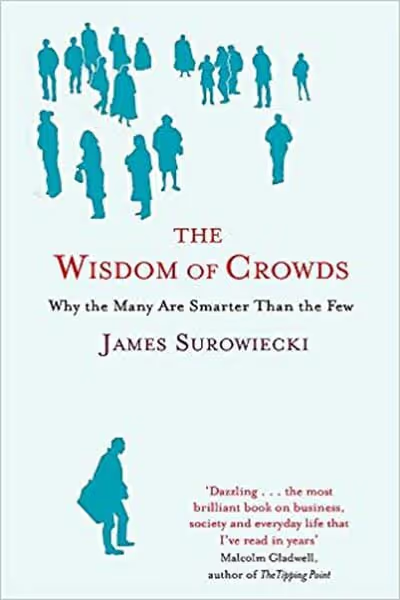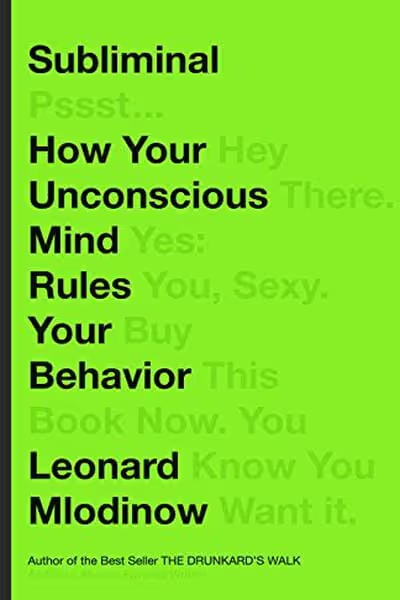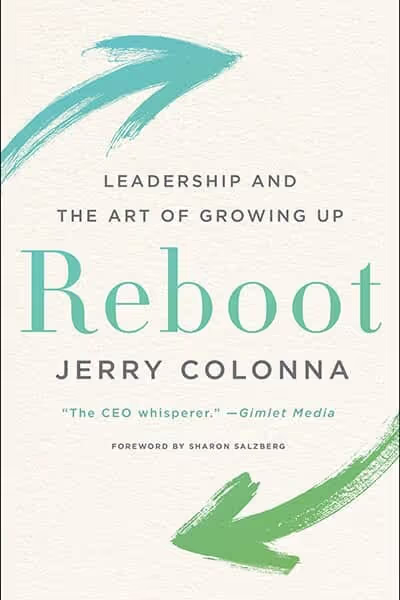The Inner Game of Tennis
The Inner Game of Tennis is a revolutionary program for overcoming the self-doubt, nervousness, and lapses of concentration that can keep a player from winning. Now available in a revised paperback edition, this classic bestseller can change the way the game of tennis is played.
The best guide to getting out of your own way
When Roger Federer announced his retirement, I thought of a fascinating insight he once gave me into his playing style. One of the keys to his success, he told me, is his incredible ability to keep his cool and remain calm.
Anyone who saw Roger play knows what he meant. When he got down, he knew he might need to push himself a little more, but he never worried too much or got too down on himself. And when he won a point, he didn’t waste a lot of energy congratulating himself. His style was the opposite of someone like John McEnroe, who showed all of his emotions and then some.
I was glad to hear Roger talk about that element of his game, because it’s something I’ve been trying to incorporate in my own way since the mid-70s, when I first came across Timothy Gallwey’s groundbreaking book The Inner Game of Tennis. It’s the best book on tennis that I have ever read, and its profound advice applies to many other parts of life. I still give it to friends today.
Inner Game was published in 1974 and was a big hit. Gallwey, a successful tennis coach based in southern California, introduced the idea that tennis is composed of two distinct games. There’s the outer game, which is the mechanical part—how you hold the racket, how you keep your arm level on your backhand, and so on. It’s the part that most coaches and players tend to focus on.
Gallwey acknowledged the importance of the outer game, but what he was really interested in, and what he thought was missing from most people’s approach, was the inner game. “This is the game that takes place in the mind of the player,” he wrote. Unlike the outer game, where your opponent is the person on the other side of the net, the inner game “is played against such obstacles as lapses in concentration, nervousness, self-doubt, and self-condemnation. In short, it is played to overcome all habits of mind which inhibit excellence in performance.”
That idea resonated with me so well that I read the book several times, which is unusual for me. Before I read it, in just about every match I would say to myself at some point: "I’m so mad that I missed that shot. I’m so bad at this." That negative reinforcement would linger, so during the next point, I was still thinking about that bad shot. Gallwey presented ways of letting go of those negative feelings and getting out of your own way so you could move on to the next point.
Gallwey had one particular insight that seems crazy the first time you hear it. “The secret to winning any game,” he wrote, “lies in not trying too hard.”
How could you expect to win by not trying too hard? “When a tennis player is ‘in the zone,’ he’s not thinking about how, when, or even where to hit the ball,” Gallwey wrote. “He’s not trying to hit the ball, and after the shot he doesn’t think about how badly or how well he made contact. The ball seems to get hit through a process which doesn’t require thought.” (Gallwey was writing at a time when it was still common to use the word “he” to refer to everyone.)
The inner game is really about your state of mind. Is it helping you or hurting you? For most of us, it’s too easy to slip into self-criticism, which then inhibits our performance even more. We need to learn to learn from our mistakes without obsessing over them.
Gallwey and his readers quickly realized that the inner game wasn’t just about tennis. He went on to publish similar books about golf, skiing, music, and even the workplace: He created a consulting business that caters to Fortune 500 companies.
Even though I stopped playing tennis in my 20s so I could focus on Microsoft and didn’t start again until my forties, Gallwey’s insights subtly affected how I showed up at work. For example, although I’m a big believer in being critical of myself and objective about my own performance, I try to do it the Gallwey way: in a constructive fashion that hopefully improves my performance.
And although I’m not always perfect at it, I try to manage teams the same way. For example, years ago, there was an incident where a team at Microsoft discovered a bug in a piece of software they had already shipped to stores. (This was back when software was sold on discs.) They would have to recall the software, at significant cost to the company. When they told me the bad news, they were really beating themselves up. I told them, “I’m glad you’re admitting that you need to replace the discs. Today you lost a lot of money. Tomorrow, come in and try to do better. And let’s figure out what allowed that bug to make it into the product so it doesn’t happen again.”
Tennis has evolved over the years. The best players in the world today play a very different style from the champions of 50 years ago. But The Inner Game of Tennis is just as relevant today as it was in 1974. Even as the outer game has changed, the inner game has remained the same.
It is said that in breathing man recapitulates the rhythm of the universe. When the mind is fastened to the rhythm of breathing, it tends to become absorbed and calm. Whether on or off the court, I know of no better way to begin to deal with anxiety than to place the mind on one’s breathing process.



























































